
Parenting bright, right-brain kinesthetic learners can be a rewarding and sometimes challenging experience. These children typically have unique strengths and learning preferences that may differ from more traditional educational approaches. Reducing anxiety and building self-confidence are essential aspects of supporting their development.
Here are some strategies to consider:
1 – Understand their learning style: Right-brain kinesthetic learners thrive in hands-on, experiential learning environments. They often struggle with traditional lecture-based teaching methods. By understanding their learning style, you can tailor their educational experiences to better suit their needs. Incorporate activities, experiments, and projects that allow them to engage their senses and interact with the material.
2 – Encourage their interests: Right-brain kinesthetic learners often have specific areas of interest and passion. Support and encourage these interests by providing resources, books, and activities related to their passions. This helps them feel motivated and engaged in their learning, building their self-confidence.
3 – Provide a supportive environment: Creating a nurturing and supportive environment is crucial for reducing anxiety and building self-confidence. Offer plenty of positive reinforcement, praise their efforts, and acknowledge their achievements. Create a safe space where they feel comfortable expressing their thoughts and ideas without fear of judgment.
4 – Foster a growth mindset: Help your child develop a growth mindset by emphasizing the value of effort and perseverance. Teach them that mistakes and failures are opportunities for learning and growth. Encourage them to set realistic goals and celebrate progress along the way.
5 – Teach relaxation techniques: Right-brain kinesthetic learners can sometimes become overwhelmed or anxious due to their heightened sensitivity and sensory processing. Teach them relaxation techniques such as deep breathing exercises, mindfulness, or yoga to help manage anxiety. These techniques can provide them with tools to calm their minds and bodies during stressful situations.
6 – Provide structure and routines: While kinesthetic learners thrive on hands-on activities, they also benefit from having structure and routines in their daily lives. Establish consistent schedules for meals, bedtime, and study time. This helps them feel more secure and provides a sense of predictability, which can reduce anxiety.
7 – Seek additional support if needed: If your child is experiencing significant anxiety or struggling with self-confidence, it can be beneficial to seek professional support. Consult with their teachers, school counselors, or child psychologists who specialize in working with gifted and kinesthetic learners. They can offer valuable insights, strategies, and interventions tailored to your child’s needs.
At 3D Learner, we use tools like the Safe and Sound Protocol ® and a Personal Controller to reduce anxiety. Building self-confidence comes from our focus on catching the students doing the right things, and getting them to acknowledge they are getting better. We help parents to better understand how they can change their words and how they say it to both reduce anxiety and build self-confidence.
Remember that every child is unique, and what works for one child may not work for another. Be patient, flexible, and open to adapting your parenting strategies as you learn more about your child’s needs and preferences. By addressing anxiety and building self-confidence, you are empowering your child to embrace their strengths and reach their full potential.
One of the best compliments we received was from a dad who said,
“Mark, you are the second best professional I have ever met at boosting my son’s self-esteem, but your wife is better”.
Our entire team, the tools we use and the way we interact are all designed to help every student to improve their self-confidence and to reduce their anxiety. For the bright right brain kinesthetic learner, who often struggles with high anxiety and low self-confidence, these issues are even more important.
If you would like to discuss how we could develop your child’s academic skills, while reducing anxiety and building their self-esteem, call us at 561-361-7495 or click here to schedule a Reduce anxiety and build self-confidence conversation.

For the bright right brain kinesthetic learner, math word problems have become a major issue. While reading scores dropped after the pandemic, math scores dropped even further. As shown below, the percent of 4th and 8th graders meeting grade level standards on the NAEP (National Assessment of Educational Progress), dropped by 7 and 8 points respectively. The bad news is that problems with math word problems rarely self-correct.
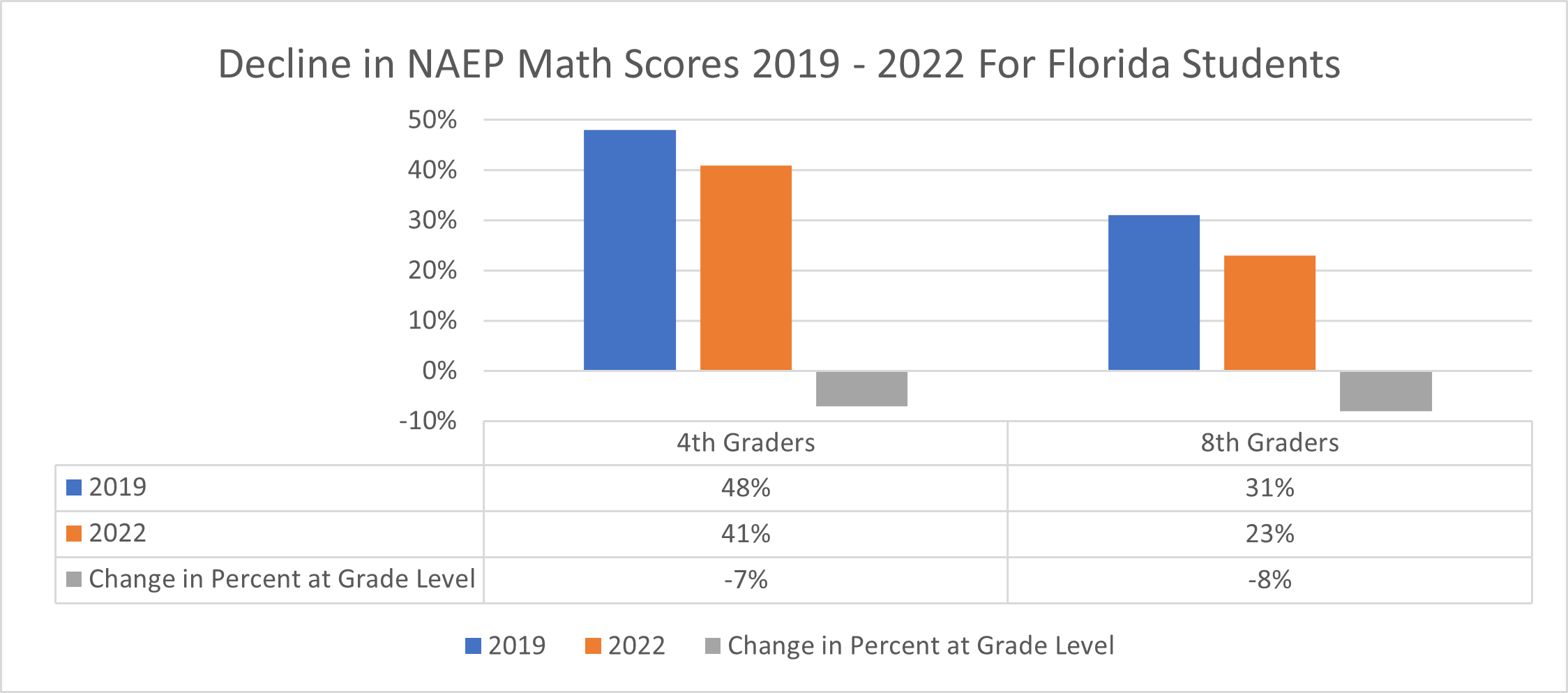
The good news is that we have over 25 years of experience helping students to make dramatic gains in their math performance. This includes:
- A student who had been to 17 other math tutors and was operating at the1st percentile in math. We were able to get her to the 47th percentile
- A smart 4th grader, who we were able to get from the 48th to the 98th percentile
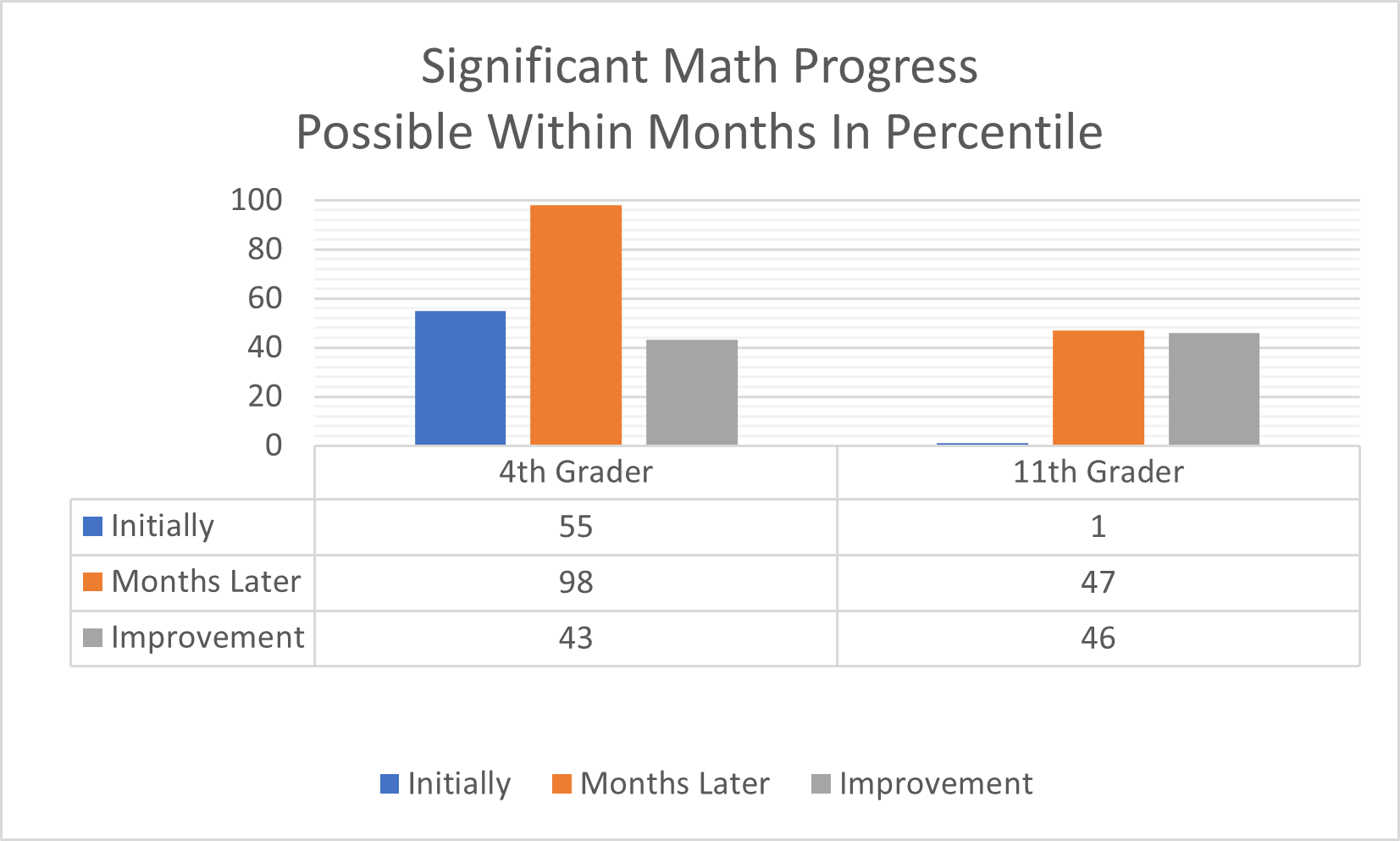
- Many students who were getting Cs, Ds and Fs, who went to As and Bs within months
If your child is experiencing difficulties with math word problems and you want to discuss what can be done,
Call us at 561-361-7495 or
Click here to schedule a Math Stress to Success Conversation
The Bright Right Brain Kinesthetic Learner may do well in the lower grades in math, but …
When math shifts in third and fourth grades to math word problems, virtually all our students have problems. This is often the result of many challenges, including:
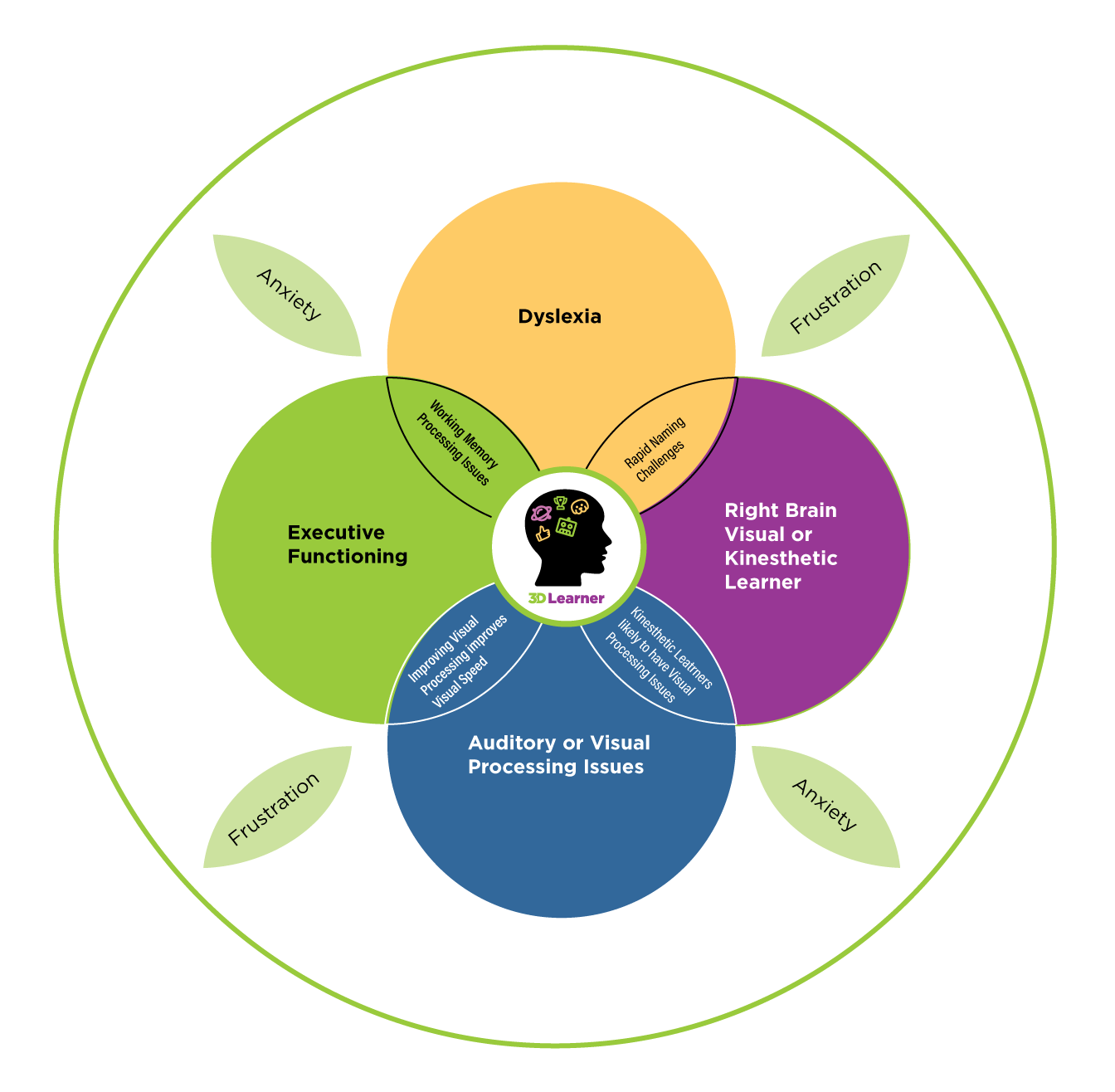
Learning differences, visual processing issues and/or executive function issues are the multiple challenges that make math problems so difficult, and why remediation must address the relevant issues.
- The bright right brain kinesthetic learner learns differently than the logical, sequential and auditory approach that schools may use. They often have problems recognizing words, with the vocabulary and with the way the problems are worded. The right brain kinesthetic learner often does not learn how to leverage their visualization skills to understand and solve the problems.
- Visual processing issues are both common with the right brain kinesthetic learner and visual processing issues result in:
-
- Number reversals
- Not lining up the numbers correctly
- Missing signs – especially negative and division signs
- Making careless mistakes
- Executive function challenges may cause:
- Problems remembering math facts and the order of operation
- Losing focus when doing homework, during class when they are lost and during tests
- Difficulty finishing tests on time — the right brain kinesthetic learner
- Anxiety and frustration with math. We have heard too many students in the last year say, “I hate Math”.
For Bright Right Brain Kinesthetic Learners Struggling with Math Word Problems:
We Assess for Success looking
- How your child learns best
- Whether he or she has a visual processing issue
- Whether there is an attention, working memory and/or processing speed issues
We offer an Integrated, Engaging and Effective Program that often results in significant gains within months, especially for the bright right brain kinesthetic learner.
If your child is experiencing difficulties with math word problems and you want to discuss what can be done,
Call us at 561-361-7495 or
Click here to schedule a Math Stress to Success Conversation

(Call us at 561-361-7495 if you would like to discuss how your child can make significant progress this summer)
70% of our clients contact us to improve their child’s reading comprehension and executive function skills. 30% of our clients want to improve reading comprehension and executive function skills and have a Dyslexia Treatment to improve their child’s reading fluency, too.
As of July 1, we will be entering our 27th year in business. What is really troubling is that more students than anytime in our career are further behind in reading fluency, reading comprehension and math. To make matters worse, more students lack the foundational skills and confidence needed to succeed. Our goal is to help our students to make significant gains in months, to address the relevant academic skills and to identify and address the key foundation skills that are missing. We also strive to reduce anxiety, boost confidence and instill a love for learning.
If you want to have a conversation on Creating a Pathway from Stress to Outrageous Success for your child,
– Call us at 561-361-7495 or
– Find a mutually agreeable time on our schedule by clicking on Let’s Schedule a Conversation.
On Thursday May 4th, we will be hosting a webinar at 8:30 pm on a
Summer Program to Dramatically Improve Reading Fluency, Reading
Comprehension, Executive Function Skills and Confidence.
Click here to register for our Parents make The Difference Webinar
What makes 3D Learner a unique offering:
- We tailor our program to meet the key goals we set with parents. These might include: improving reading comprehension by 2, 3 or even 4 grade levels in 4 to 6 months; improving reading fluency; improving attention, working memory and/or processing speed; addressing visual processing in a way that improves academics and athletic skills: and/or reducing anxiety, building confidence and igniting a love for learning
- Our assessment process evaluates reading fluency, reading comprehension, executive function skills, visual processing, how your child learns best, where your child is strong and where they struggle. We then incorporate a debrief that results in setting goals for the next 4 to 6 months. If you would like, we then provide program options that can address some or all of the relevant issues.
Our process allows us to identify the bright right brain kinesthetic learner, who is often much smarter than present results would indicate. We also provide an in-depth look at how your child’s eyes track when reading; whether your child has an attention, working memory and/or processing speed issue; and to what extent there are issues with decoding, phonemic aware, and reading fluency
 Our process starts with an assessment that identifies: the right brain kinesthetic learner; whether there are a visual processing, working memory, processing speed and/or attention issue; whether dyslexia is present; and your child’s present level of reading comprehension.
Our process starts with an assessment that identifies: the right brain kinesthetic learner; whether there are a visual processing, working memory, processing speed and/or attention issue; whether dyslexia is present; and your child’s present level of reading comprehension.
We also provide parent training that helps you to become even more effective coaches and advocates for your child.
- We use the UFLI Program ® to improve decoding, phonemic awareness and reading fluency, where needed. This program moves at a faster pace than most, but reinforces what the student has learned throughout the process. This is a dyslexia treatment that fits well into our program.
- We target the areas of greatest need. Often this includes some combination of reading comprehension, reading fluency, executive function, visual processing and reducing anxiety, while building confidence. Note, the length of our program depends on your child’s needs and your goals.
It is important to note, that while a number of our students have made considerable gains, these are not possible for all students. We see the most significant gains in the student with above average and even gifted IQs who are performing well below their potential. We strive to be BOLD but realistic when we set goals.
Note, our program was designed for our daughter who was able to improve her reading comprehension 4.2 grade levels in 7 months. Today, our clients are mostly between the ages of 6 and 17.
What delights us is that we can help students to make significant gains. The first place we really make the difference is with our initial conversation. Three examples:
- Mom called with a problem that is impacting many students today. The private school her son attended suggested she find a different school for her son, based on his reading comprehension being 2 years below grade level. She called us and after 10 minutes she commented, “How is it you know my son better than anyone at his school who have known him for 4 years”. She came to us from out of state and her son improved his comprehension 3 grade levels in a year. His teacher said, “Thomas made more progress in a year than any student I have had in 27 years of teaching
- Mom called from the state of Washington. She had been told her son was a right brain visual learner, who learned best when he saw and experienced information. She too was surprised how well we knew her child. Her son was able to improve his reading comprehension 4 grade levels in 7 months and blossom as a student.
- A local mom called us. She heard about us from a friend, where we had helped her friend’s gifted son go from the 58th to the 99th percentile in reading comprehension. Note, he later went to MIT. Mom had a son who was smart, but his reading comprehension was 4 years below grade level. Her challenge was that her son did not realize how smart he was. Our assessment showed that as he was about to enter 9th grade, he was at college level on 9 out of the 26 skills we assessed and only had 4 areas where he was weak. For the first time he saw himself as a smart kid who learned differently. In less than 4 months, he was able to improve his reading comprehension from the 5th to the 9th grade level and increase his reading speed from 200 to 360 words per minute. He went onto get several full college scholarships
All this starts when the parents engaged in a conversation to discover how her child could succeed.
Click here to register for our Parents make The Difference Webinar
If you want to have a conversation on Creating a Pathway from Stress to Outrageous Success for your child,
– Call us at 561-361-7495 or
– Find a mutually agreeable time on our schedule by clicking on Let’s Schedule a Conversation
Our Assessment Special
Complete a Comprehensive Assessment in May and receive the Safe and Sound Protocol ® — ordinarily a $300 investment — that will help your child and you reduce stress and anxiety
.
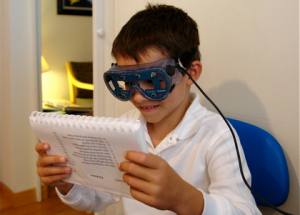
Ask about our Assessment Special, Available Thru May that could significantly reduce anxiety and stress for your child and you
At schools like Riverglades Elementary, close to 80 percent of the students’ reading comprehension and math are at grade level or above. What we have found with schools like Riverglades is:
- Many students are doing very well.
- A significant number are at grade level, and they have the potential to significantly improve their reading comprehension and/or math with the right intervention.
- There are small but significant number of smart struggling students are far smarter than their present level of reading comprehension and math would indicate.
- Anxiety and frustration are more prevalent and more severe than at any point in our careers.
Invest in our Assessment thru May, and we will include the Safe and Sound Protocol ® at no extra cost. This is a research-based program that works on the Vagus nerve to reduce anxiety and stress.
At 3D Learner, we have 26 years experience at helping students to make significant gains in months. Let’s take two examples:
- One student was at the 48th percentile in reading comprehension. Mom went to her principal, and asked, “What can I do to help my child reach her potential? The answer was, “There is no reason to act, someone has to be average”. Mom called a fellow Parkland mom, who suggested she call us.
The three questions we started with were:
- Does your child remember places visited, even from years ago?
- Does your child learn best when she sees and experiences information?
- Is your child a lot smarter than present results would indicate?
Mom commented, “I have never been asked any questions like this. How is it you so accurately described my daughter?”
Like many of our students, our assessment revealed her daughter:
- Was a bright right brain kinesthetic learner who learned best when she saw and experienced information
- Had a number of strengths that were well above grade level
- Had a few glaring challenges — including she:
- Skipped words and lines when reading
- Easily lost focus when bored and frustrated
- Became very anxious at times
With the 3D Learner Program ®, we were able to help this smart struggling child to:
- Improve her reading comprehension from the 48th to the 95th percentile
- Significantly improve her executive function skills
- Go from an anxious introvert to a very outgoing and confident student
- Excel in school and music
All because mom chose to not accept someone else’s limiting beliefs and decided to partner with 3D Learner.
Another Parkland student was really struggling. Despite an above average IQ, his reading comprehension was at the 18th percentile. The parents had previously invested $6000 in another program without the desired results. When they read an article we had written about Bright Right Brain Kinesthetic Learners, they called us. They had a smart child who:
- Learned best when he saw and experienced information
- Skipped words and lines when reading
- Was a lot smarter than present results would indicate
- Was struggling to ride a bike
With our help, he was able to improve his reading comprehension from the 18th to the 84th percentile, excel in school and he rode his bike after the first few days of training. Note, we work on foundational skills and they often translate to better reading comprehension, sports skills and even riding a bike.
If you have a child who is doing OK, but has significant upside potential, either:
- Give us a call at 561-361-7495 and let’s have a Make The Difference Conversation or
- Click here to find a mutually agreeable time on our schedule for a Zoom Make The Difference Conversation
Note, many student with significant upside potential have three, four or five of the following strengths and challenges
- They are bright right brain learners, who learn best when they see and experience information
- They skip words and/or lines when reading
- They have executive function challenges (e.g. attention, working memory, and/or processing speed challenges
- Dyslexia or another learning disability
- Anxiety and/or frustration

When you capitalize on a student’s strengths and identify and address their challenges, one can see significant improvements in reading comprehension and self-esteem.
Another student had dyslexia, but had a similar profile. A dyslexia treatment and ADHD medication were recommended. Mom found our “is your child a right brain kinesthetic learner screening tool”. When she called us she commented that described her child. Mom noted that they had their daughter’s eyes checked by an ophthalmologist, who had found no issue.
When they did the assessment, we put her daughter on a Visagraph that shows how her child’s eyes tracked when reading. It turned out her left eye never moved; it literally went down the page. We asked her daughter if her eyes were tired when she read, and she said “Yes, all the time”.

The assessment showed that she:
- Was a lot smarter than present results would indicate
- Had a significant problem sustaining attention after just 5 minutes
- Did get quite anxious, even when we were just asking questions
Mom asked if the Interactive Metronome ® we used for testing could improve her daughter’s attention, without medication. We assured her it could.
With our help their daughter:
- Go from the worst reader in her class third grade class to the best
- Go from a non-reader to an avid reader
- Significantly improve her attention
- Reduce homework time from over 2 hours a night to under an hour
Her dad asked her how she made so much progress and the young lady said, “3D Learner taught me how to visualize what I read; do you know how cool that is?”
Note, it is possible to significantly improve reading comprehension and self-esteem, while reducing anxiety within month
If you have a child with significant upside potential, either:
- Give us a call at 561-361-7495 and let’s have a Make The Difference Conversation or
- Click here to find a mutually agreeable time on our schedule for a Zoom Make The Difference Conversation
Note, click here if you would like to download our Strengths and Weaknesses page.
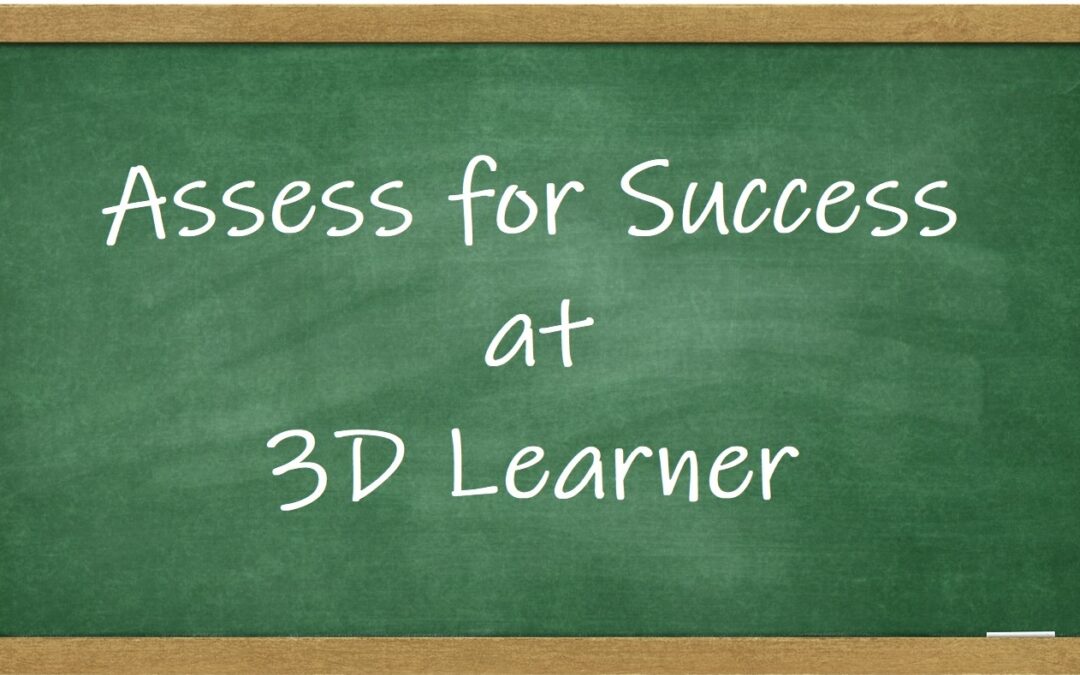
Ask About Our May Assessment Special to reduce anxiety and stress
Over the last two years, we have assessed a number of students and seen seven trends:
- Executive function deficits are the most common problem – these include problems with attention, working memory, processing speed and related skills
- Reading comprehension levels are further below grade level than at any point in our 26 years in assessing students
- Many students lack the language skills needed to succeed
- Visual processing challenges are more common and the issues are often more severe
- Dyslexia is more common and students are often lacking the basic phonics, phonemic awareness and related skills they need to succeed
- More programs than ever are attacking dyslexia, but do not necessarily capitalize on these student’s strengths or address the executive function and visual processing issues.
- Parents want to help but are overwhelmed.
Over the last 26 years, 3D Learner has helped thousands of students succeed with an approach that helps parents see their child’s potential for growth when they:
Reject the status quo and look for solutions that:
-
-
- Identify and capitalize on their child’s strengths
- Identify and address their child’s weaknesses
- Boost their child’s self-esteem and lower their anxiety
- Is tailored to help their child to make significant gains within months
- Helps parents to be even more effective coaches and advocates for their child
We suggest you contact us to start a conversation that allows you to discuss your child’s challenges and gifts and learn how you can make the difference.
Assess for Success. School based assessments are specifically designed to identify or rule out certain conditions (e.g dyslexia, learning disabilities, ADHD, working memory, processing speed etc). Our goals are to identify:
-
-
-
- How a child learns best and where they are strong
- Where they struggle, with a focus on executive function skills, visual processing, language and dyslexia
- Their present level of performance, especially for reading comprehension
- A tailored solution that can help a student make dramatic gains in months
Our Story
We have been there with our own kids. With my daughter, dyslexia was the diagnosis and we tried one dyslexic treatment after another. It improved our daughter’s reading fluency, that is how efficiently and effectively she could read out loud. Unfortunately, she continued to struggle with:
-
-
- Reading comprehension
- Executive function skills — attention, working memory and processing speedAnxiety and frustration – who wouldn’t be frustrated if you were a lot smarter than present results indicated
In 8th grade, we were told our daughter was not college material, because her reading comprehension was 3 years below grade level. I became a mom on a mission. I am Mira Halpert. I have my Master’s in Education and significant educational experience, but I needed a different set of tools.
With the 3D Learner Program ® I developed, my daughter improved her reading comprehension 4.2 grade levels in 7 months. She will soon complete her 19th year of teaching. Next year, she will earn her PHD.
Over the last 26 years, 3D Learner has helped thousands of smart kids succeed.
This includes:
-
-
- A kindergarten student who was really struggling who aced the first grade final the first week of first grade
- A 1st grader who was really struggling who is now going to Emory Univeristy
- A 2nd grader who improved her reading comprehension 2 grade levels in 4 months and 3 grade levels in 7 months, after being stuck for two years
- A 3rd grader who made more progress than any student his teacher had had in 27 years of teaching
- A 4th grader whose parents were told to send him to a school for students with dyslexia who wound up at Harvard
- A 5th grader whose reading comprehension was at the 1st grade level, she read slowly and homework time took forever. She improved her reading comprehension 4.2 grade levels, doubled her reading speed and cut her homework time by 50 percent. She also did it independently
- Middle and high school students who improved their comprehension 3 and even 4 grade levels in 4 months and who dramatically improved their sports skills
Questions for you to consider
Is your child a bright right brain kinesthetic learner?
-
-
- Does your child remember places, even from years ago?
- Does your child learn best when he or she sees and experiences information?
- Is your child a lot smarter than present results would indicate?
If the answers are yes, there is a good chance your child is a right brain kinesthetic learner. Dr. Linda Silverman has developed a 15 question screening tool to identify the right brain kinesthetic learner. Click here to see if your child might be a right brain kinesthetic learner.
Studies have shown that over 60 percent of the students today learn best when they see and experience information. Many of the other students are more logical, sequential and auditory, which is the way schools often teach. As a result, these right brain kinesthetic learners make up a significant percentage of the smart struggling students.
These are the students we do very well with,
The infographic below shows the 5 key attributes of these students. That is they are:
-
-
- Often a right brain kinesthetic learner
- Virtually all of them either have executive function challenges that might include:
- Attention to that which is boring or frustrating
- Working memory – they often have an excellent memory for that which they see and experience and a much weaker memory for that which they hear or read
- Processing speed — like the old 56k modems, they download visuals very slowly
- Visual processing issues are found in over 70 percent of our students. That is they see and experience information.
- Close to 40 percent of our students are struggling with dyslexia and/or learning disabilities
- Anxiety and/or frustration are often present

Since our goal is to tailor a program to improve reading fluency, reading comprehension, executive function, math skills and lower anxiety, we need to assess the whole child.
If you would like to discuss your child’s situation,
a) Call us at 561-361-7495
b) Click here to schedule a zoom meeting:
Assess for Success Conversation
We encourage you to call us to discuss how you can significantly improve your child’s executive function skills, reading comprehension, self-esteem and so much more.

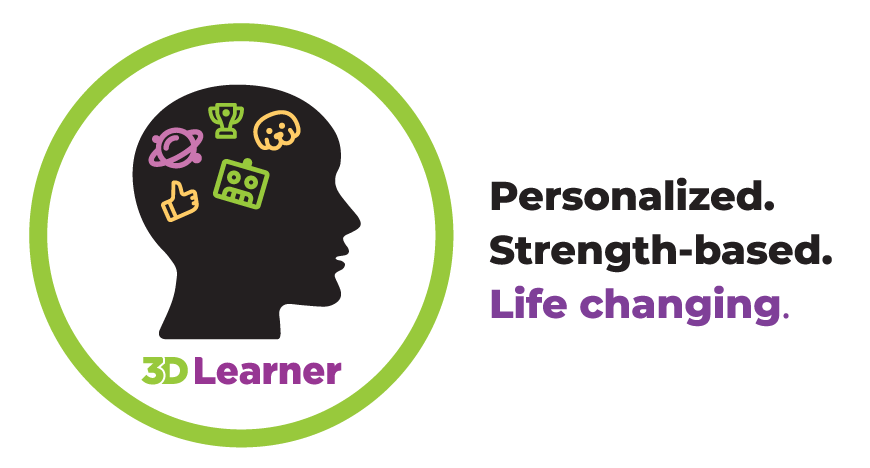
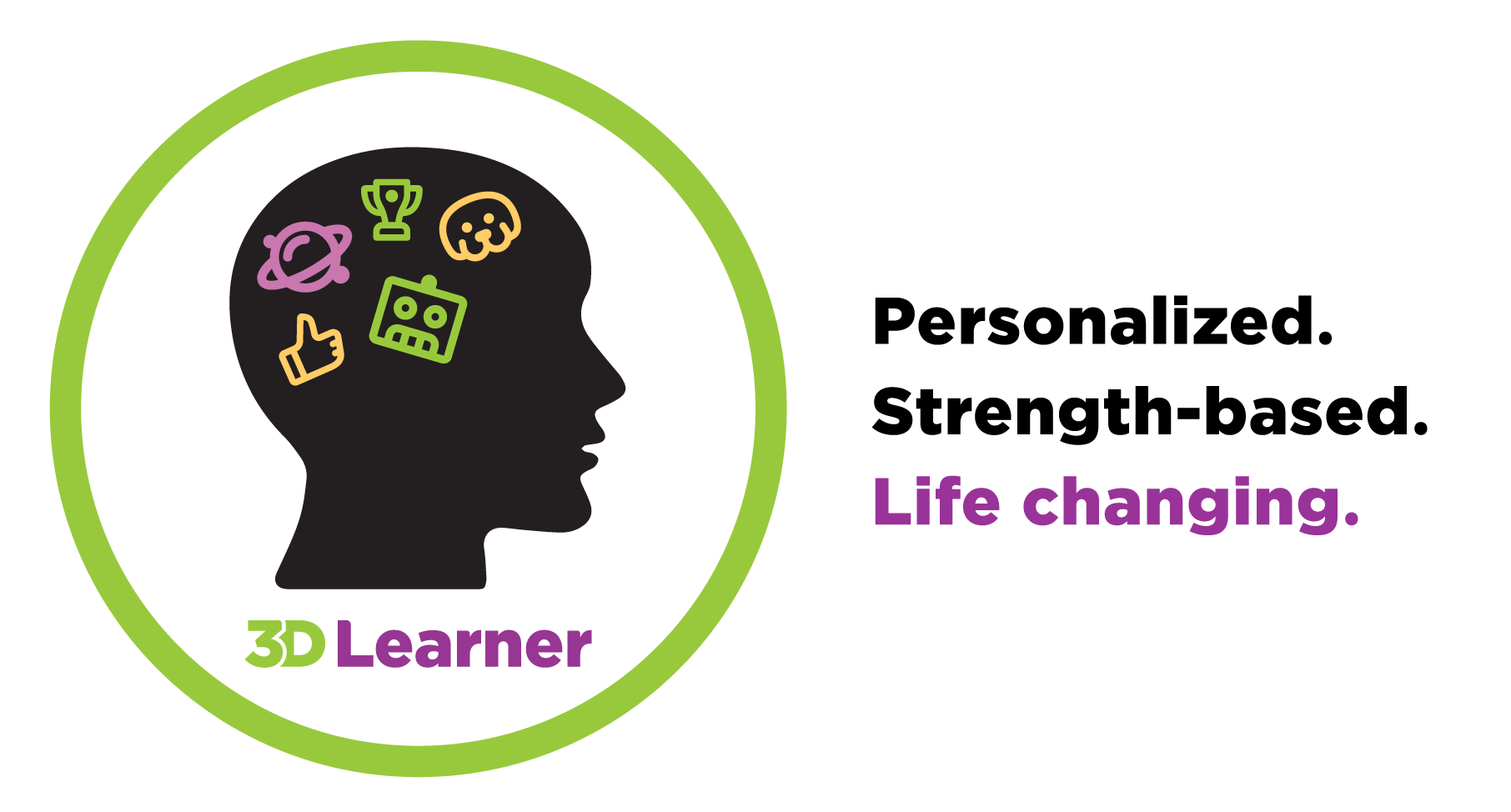







Recent Comments